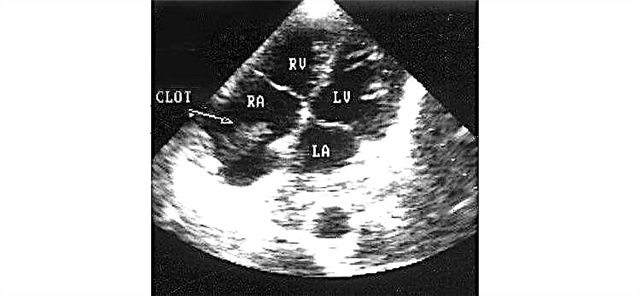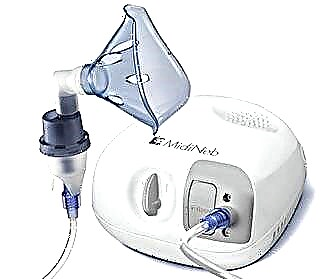Normally, the heart rate is unstable. It accelerates under loads and returns to its previous level when it becomes possible. Sometimes this does not happen, then the doctor talks about arrhythmia. Its most favorable form is supraventricular tachycardia. But, like other types of pathology, without appropriate treatment, it wears out the myocardium and leads to heart failure.
Description
Supraventricular (or supraventricular) tachycardias (SVT) are a large group of cardiac arrhythmias in which there are 3 or more consecutive heartbeats above 100 beats per minute.
As the name implies, the source of pathological impulses that cause arrhythmia is located above the ventricles - in the atria, atrioventricular junction and sinoatrial node.
NVT are much less life-threatening than ventricular tachycardias! Of great danger are not the tachycardias themselves, but the diseases against which they develop.
The prevalence of rhythm disruption is 2.25 per 1000 people. Mostly women are affected. The distribution among age groups (children, adults, elderly) differs for each individual type of SVT. For example, sinus tachycardia (you can read more about it here) is often diagnosed in children, as well as the syndrome of early repolarization of the ventricles. In the ICD, supraventricular tachyarrhythmias are coded I47.0 and I47.1.
The clinical manifestations of NVT are very diverse - from an absolutely asymptomatic course to repeated loss of consciousness.
Causes of occurrence
The many reasons contributing to the occurrence of supraventricular tachycardia can be divided into 2 groups:
- Extracardiac - external factors, diseases or conditions not related to the heart, which can trigger arrhythmia:
- emotional stress or physical exertion;
- the use of nicotine, alcohol, caffeine, drugs (cardiac glycosides, antidepressants, diuretics);
- endocrinological diseases - for example, an overactive thyroid gland (thyrotoxicosis) or an adrenal tumor producing adrenaline and norepinephrine (pheochromocytoma);
- fever;
- anemia;
- electrolyte disturbances - an excess or, conversely, a lack of certain minerals in the blood (potassium, sodium, magnesium, calcium);
- shift of acid-base balance (blood pH).
- Intracardiac - these include organic heart disease:
- ischemic heart disease (CHD);
- chronic heart failure (CHF);
- congenital and acquired heart defects;
- cardiomyopathy;
- pericarditis;
- postinfarction cardiosclerosis;
- chronic cor pulmonale
Classification and types
There are many forms and types of SVT, which are divided according to different characteristics. Along the flow, paroxysmal (paroxysmal) and non-paroxysmal (continuing continuously) are isolated. The following forms of supraventricular tachycardia are also found: sinus, reciprocal, atrial flutter and atrial fibrillation.
Paroxysmal reciprocal AV nodal tachycardia is the most common form of SVT among young healthy people. You can read more about why it occurs and how it is treated here.
Paroxysmal supraventricular tachycardia
The concept of paroxysmal supraventricular tachycardia includes atrial (with the exception of fibrillation and flutter) and paroxysmal atrioventricular failures. Separate isolation of paroxysmal forms is of clinical significance, since these arrhythmias are bOGreater threat to human life than continuously flowing.
Also, the association is due to the fact that all paroxysmal SVT (with the exception of SVC syndrome) have common features:
- the sudden appearance and the same sudden cessation of a rapid heartbeat;
- higher, in comparison with permanent SVT, heart rate;
- similar clinical symptoms accompanying the attack;
- the same treatment regimens to stop arrhythmias.
Most of my patients tell that during an attack they have a sharp heartbeat, discomfort, compression in the region of the heart, and general weakness. In more severe cases, when blood pressure decreases due to an irregular heart rhythm, the patient develops dizziness, the flickering of flies in front of his eyes - the so-called light-headedness, and sometimes he loses consciousness (fainting).
An attack of tachycardia can also be accompanied by sweating, nausea, and tremors in the body. I often see patients who urinate more often after it.
In about 10-15% of patients during paroxysm, the main symptoms are abdominal pain, nausea, vomiting, and frequent urge to defecate. Often they are even hospitalized in the surgical department with a diagnosis of acute abdomen.
Many of my patients do not feel any manifestations of rhythm disturbances at all, although when the cardiogram is taken, they have a paroxysm of supraventricular tachycardia.
In older people with cardiac disease, an attack can cause heart pain, worsening symptoms of heart failure (shortness of breath, fatigue, swelling of the legs), hypotension, pulmonary edema, and shock. In such patients, it is important to correctly determine the source of the signs: they often suffer from a large number of pathologies, each of which may have similar manifestations. How not to get confused? Correct questioning is key. It is necessary to detail each complaint and delve into the process of its origin. Do not forget about the external signs of the patient, which often help to quickly determine the root cause of the patient's suffering.
Atrial tachycardia (AT)
This type includes SVT, in which the source of the rhythm disturbance is in the atria. Depending on the number of these sources, monomorphic and polymorphic atrial tachycardias are distinguished.
About 10-15% of all cases of NVT are PT. Small symptoms of PT can also be observed in healthy people.
According to the clinical course, they are paroxysmal and constant, paroxysmal is more common. With a constant form, a person may not experience any unpleasant sensations.
The predominant number of atrial tachycardia has the same causes as all arrhythmias. They sometimes develop after atrial surgery. Polymorphic PTs in most cases occur in severe bronchopulmonary pathology.
A polymorphic variant is an unfavorable sign that increases the likelihood of death. However, the severity of the situation is often associated not with the arrhythmia itself, but with the course of the underlying disease, which was the cause of the tachycardia.
The consequences of a prolonged non-paroxysmal course of PT: expansion of the cardiac cavities and deterioration of the myocardium's ability to pump blood normally.
ECG signs
All NVTs have common features on the cardiogram:
- increased heart rate (HR) - from 100 to 250 per minute;
Of course, each type of arrhythmia has its own individual characteristics on film. This happens because the heart rhythm disturbance is based on inadequate electrical activity of the heart and in each case it is different. It is worth mentioning the following features of cardiograms with NVT:
- Before the paroxysm of sinoatrial reciprocal tachycardia, an atrial extrasystole is always present.
- The atrial type is characterized by a change in the shape of the P wave (decrease in amplitude, deformation, negativity). Perhaps the development of AV block of the 1st degree, which is manifested on the film by the lengthening of the P-Q interval.
- In SVC syndrome, three specific signs are revealed: the presence of a delta wave, shortening of the P-Q interval, expansion and deformation of the QRS complex.
- Atrial fibrillation and flutter. P waves are completely absent. Instead, there are frequent large F waves (when fluttering) or small random f waves.

Sometimes it happens that the supraventricular tachycardia on the ECG is not visible, especially often it happens in the paroxysmal form. Therefore, I almost always prescribe Holter (daily) ECG monitoring to my patients.
A special intracardiac electrophysiological study is performed to identify rare SVTs that have additional pathways for the impulse. It is of great importance, since the need for surgical treatment is determined based on the results of this test.
Treatment
NVT therapy has 2 goals:
- relief of paroxysms;
- prevention of the occurrence of paroxysms.
According to the protocol of the professional standard, the algorithm for stopping NVT is as follows: vagal techniques → electrical cardioversion → drug cardioversion.
To relieve an attack of supraventricular tachycardia, the so-called vagal tests are very effective, which act on the principle of mechanical or reflex stimulation of the vagus nerve, which slows down the heart rate. The following techniques are distinguished:
- Valsalva test - straining the face with swelling of the cheeks for 20-30 seconds after maximum inhalation;
- carotid sinus massage - strong pressure and massaging of the carotid artery in the area of the angle of the lower jaw;
- Ashner test - pressing on closed eyeballs for 5 seconds;
- cold - washing your face or dipping your head in cold water;
- violent challenge of the gag reflex - by stimulating the root of the tongue;
- fast and violent cough.
In my practice, I prefer the Valsalva test as the safest.
If, after the above manipulations, the attack continues, an electric shock is applied using external cardioversion or transesophageal stimulation.
In case of ineffectiveness of these measures or impossibility of their implementation due to the lack of appropriate equipment, I resort to intravenous administration of the following antiarrhythmic drugs (MPs):
- "Triphosadenin" ("ATF");
- Verapamil, Diltiazem;
- Propranolol, Esmolol, Sotalol;
- "Amiodarone";
- "Procainamide".
For the prevention of seizures, the most effective is the operational (surgical) method - radio frequency ablation (RFA), which consists in the destruction of the arrhythmogenic area of the heart by high-frequency exposure to current. This method is contraindicated in pregnancy, as it involves X-ray exposure.
For the drug prevention of paroxysms, the same drugs are used as for the relief of an attack, only they are used in the form of tablets, and not injections.
The criterion that the treatment of supraventricular tachycardia was successful is the cessation of the attacks.
Are alternative methods of treatment effective
On the Internet, you can find a wide variety of traditional medicine recipes for the treatment of all types of arrhythmias, including VVT. However, it is worth knowing that to date, no reliable data has been obtained about any effectiveness of non-traditional methods of therapy.
Moreover, many herbs have pharmacological incompatibility with antiarrhythmic drugs, i.e., when used together, the effectiveness may decrease or, conversely, the likelihood of side effects of the drug may increase. Therefore, the use of traditional medicine methods can be not only useless, but also harmful.
In my practice, I often meet patients who do not trust traditional methods of treatment. It is difficult to stimulate them to take life-saving medications. In such cases, I resort to tricks, allowing them to use the desired folk remedies (agreed with me, of course), but only in combination with the necessary pills. Traditional medicine is full of recipes using fees, infusions and decoctions. You can read about how arrhythmia is treated with herbs here.
Expert advice
Elimination of the cause plays an important role in the prevention of SVT attacks. Therefore, I strongly recommend that my patients quit smoking, limit coffee and alcohol consumption, avoid severe stress and excessive physical exertion. It is also necessary to conduct an examination to identify a disease that could provoke the development of arrhythmia, and its competent treatment (IHD, CHF, diffuse toxic goiter, etc.). It is important to remember that tachycardia is either a normal body response to stress or a symptom of heart damage. For this, the fact of observing yourself and your rhythm is important. If you notice an increase in the frequency of seizures, sign up for a consultation with a doctor, having previously noted for yourself the conditions in which tachycardia appears.
In cases where there is no obvious connection, the doctor will recommend that you undergo tests. The first step in solving the problem of pathological tachycardia will be getting rid of any factors that can cause it in a healthy person, that is, stress. Stay calm and take care of yourself is important advice in treating rhythm disturbances.
Clinical case
A 34-year-old woman came to my clinic for an appointment with complaints of heart palpitations, accompanied by a feeling of lightheadedness and slight dizziness. These symptoms began to bother the patient about 2 months ago. The woman also noted that she had recently become irritable, her sleep had worsened. General examination revealed an irregular pulse and an enlarged thyroid gland.
The patient underwent an ECG, which showed no pathological changes. The patient is referred for a consultation with a cardiologist and endocrinologist. The cardiologist performed Holter ECG monitoring, which revealed paroxysms of monomorphic atrial tachycardia with a heart rate of up to 160 / min. Ultrasound and thyroid hormones prescribed by an endocrinologist showed signs of autoimmune thyroiditis - a diffuse increase in thyroid gland, a decrease in TSH levels, high concentrations of T4 and antibodies to TPO.
Diagnosed with Hashimoto's thyroiditis, thyrotoxic phase, paroxysmal PT. Beta-blockers were prescribed to slow down the heart rate, further observation by an endocrinologist was shown to control hormonal levels and substitution therapy.



